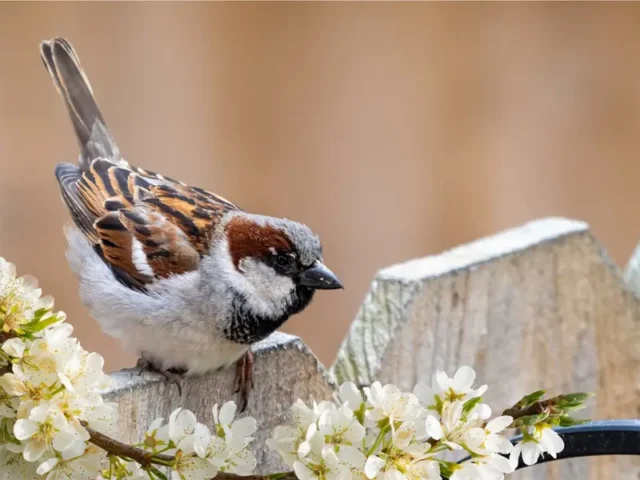In the enchanting world of birds, sparrows stand out as ubiquitous yet charming creatures, fluttering about in gardens, parks, and urban landscapes. While their small size and unassuming appearance might lead one to believe they have simple tastes, the culinary preferences of sparrows are surprisingly diverse and intriguing. This article delves into the dietary habits of these delightful avian companions, exploring what sparrows eat, how their diets vary, and the role they play in maintaining ecological balance.
The Basics:
Sparrows, belonging to the family Passeridae, are seed-eating birds with a preference for small insects. Their diet is primarily composed of seeds, grains, and various small invertebrates. However, the specific food items they consume can vary based on factors such as species, habitat, and seasonal availability.

Seeds and Grains:
One of the staples in a sparrow’s diet is seeds and grains. These can range from readily available grains like millet, sunflower seeds, and wheat to more specialized options like thistle seeds. Observing sparrows feeding on the ground or at bird feeders, one can witness their adeptness at extracting seeds from husks with their nimble beaks.
In urban environments, sparrows are known to forage for fallen seeds around bird feeders or for scraps in outdoor eating areas. This adaptability to human-altered landscapes has contributed to the success of sparrows in cohabiting with humans across the globe.
Insects and Invertebrates:
While seeds form the core of a sparrow’s diet, they are also avid insect hunters. During the breeding season, when protein-rich food is essential for the growth of their chicks, sparrows actively seek out insects and other small invertebrates. Common prey items include beetles, caterpillars, spiders, and even small worms.
The insect-hunting behavior of sparrows is not only fascinating but also plays a crucial role in pest control. By consuming insects that may otherwise damage crops or gardens, sparrows contribute to ecological balance, making them valuable allies in agricultural and horticultural settings.

Seasonal Variations:
The dietary preferences of sparrows can shift with the seasons. During the warmer months, when insects are abundant, sparrows rely more heavily on this protein-rich food source. In contrast, during the colder months, when insects are scarce, they place a greater emphasis on seeds and grains.
Understanding these seasonal variations can be essential for bird enthusiasts and conservationists. Providing supplemental food sources like bird feeders with a variety of seeds and grains can help support sparrows during times of food scarcity, contributing to their overall well-being.
Human Impact:
As urbanization continues to shape landscapes, sparrows have adapted to coexist with humans. Bird feeders and open-air eating spaces in urban areas provide readily available food sources for sparrows, influencing their dietary choices. Some studies suggest that the availability of human-provided food can impact the health and reproductive success of sparrows, underscoring the complex relationship between humans and these feathered companions.

Conservation Concerns:
Despite their adaptability, sparrows face challenges in modern urban environments. Loss of natural habitats, pollution, and changes in land use can threaten their populations. Conservation efforts aimed at preserving green spaces, creating bird-friendly urban landscapes, and raising awareness about the importance of these small birds can contribute to the well-being of sparrows and other urban wildlife.
Conclusion:
In conclusion, the culinary world of sparrows is a delightful blend of seeds, grains, and tiny invertebrates. Their adaptability to different environments, including urban landscapes, showcases the remarkable resilience of these birds. Understanding the dietary preferences of sparrows not only enhances our appreciation for their role in ecosystems but also encourages responsible practices that support their well-being. So, whether you’re a seasoned birdwatcher or a casual observer, take a moment to marvel at the diverse and fascinating culinary choices of these small yet significant avian companions.







